Getting a wheel alignment is one of the regular maintenance tasks required to keep your vehicle in tip-top condition. To make sure your car will run properly and safely, you need to have its wheels realigned at an auto repair shop or service center at a certain interval or when symptoms of misaligned wheels show. Follow this comprehensive guide to learn whether it's necessary, how often you should get a wheel alignment, and how long an ordinary alignment takes. Then see how Kia service coupons, service financing, or the Kia warranty can help you save on your next wheel alignment. If you aren't sure if the Kia warranty is right for you, check our page which goes into detail about it.
Get Tire & Wheel Help
A wheel alignment is the process of aligning the wheels of a vehicle with one another and the surface of the road. It's achieved by bringing the suspension system to its proper configuration and positioning as well as adjusting certain components. Unlike some other vehicle maintenance tasks that you can do yourself, a wheel alignment requires the expertise of an experienced mechanic and an alignment machine.
Basically, the purpose of a wheel alignment is to square a vehicle's wheels and axles with one another so that they'll move in the same direction. The process involves adjusting all the suspension angles that have an impact on tire movement and positioning, and ensuring the steering wheel is perfectly centered. The manufacturer of a vehicle designates standard angles for aligning its tires, which are specified in degrees.
The type of alignment your vehicle needs depends on its suspension system and the way it distributes power to its wheels. If you have an all-wheel-drive or four-wheel-drive vehicle, you have to get a four-wheel alignment. On the other hand, if your vehicle uses a front-wheel-drive or rear-wheel-drive system, it needs a front-end alignment or thrust-angle alignment.
Yes, wheel alignment is one of the most important maintenance tasks.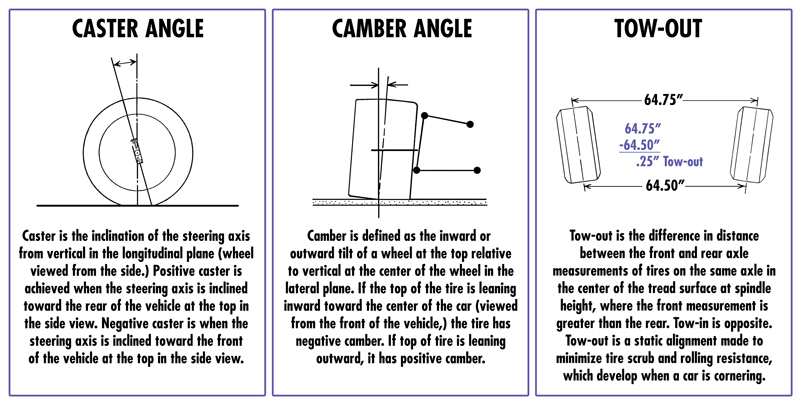 If your wheels are misaligned, your vehicle will experience a dramatic drop in handling capability. It'll constantly pull in one direction, which can greatly inhibit its ability to turn or move in a straight line. This not only makes driving more difficult and reduces ride comfort, but it can jeopardize your and your passengers' safety.
If your wheels are misaligned, your vehicle will experience a dramatic drop in handling capability. It'll constantly pull in one direction, which can greatly inhibit its ability to turn or move in a straight line. This not only makes driving more difficult and reduces ride comfort, but it can jeopardize your and your passengers' safety.
In addition, failure to realign your wheels regularly can cause your cost of car ownership to go up considerably. Wheels that aren't properly aligned may lead to uneven tire wear, which means you'll have to replace your tires more frequently. It isn't uncommon for wheel misalignment to result in flat spots and tire blowouts because it can cause your tires to experience added tension. Also, misaligned wheels can lead to damaged wheel rims and suspension, which can affect the performance and longevity of your vehicle.
The interval for wheel alignment can vary significantly depending on the type of vehicle you own, your driving habits, and other factors.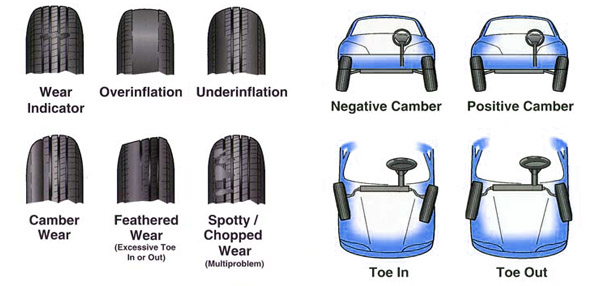 Most mechanics recommend that you get a wheel alignment once every two or three years. However, the best thing to do is to follow the recommended interval in your owner's manual.
Most mechanics recommend that you get a wheel alignment once every two or three years. However, the best thing to do is to follow the recommended interval in your owner's manual.
If your owner's manual doesn't specify how often you should have your wheels realigned, you should bring your car to a service center or auto repair shop for a wheel alignment checkup at least once a year. Usually, a vehicle's wheel alignment will be at least slightly off after one or two years of driving. Nonetheless, if your car holds the road well, doesn't drift to one side, or has evenly worn tires, it isn't necessary to have its wheels realigned every year.
It's important to note that there are specific circumstances that may cause your vehicle to require wheel alignment on a more frequent basis. Vehicles with wider tires or performance-oriented cars usually need to have their wheels aligned more often. Additionally, you should consider getting a wheel alignment every time you install new tires on your car.
Besides going for a wheel alignment checkup on a regular basis, you should also look for certain signs indicating that your wheels need to be realigned. These signs include:
 In the case of misalignment, it occurs because the tires are pulling in opposite directions.
In the case of misalignment, it occurs because the tires are pulling in opposite directions.We know Rochester drivers are busy. So is an alignment a short or lengthy process? Under normal circumstances, a wheel alignment will take an average of one hour, whether it's a two-wheel-drive or four-wheel-drive vehicle. If there's too much wear and tear or damage on the suspension system, steering bushing, track rod, or other parts, it'll take a longer time as some components have to be replaced.
Wheel alignment is an essential maintenance task that you cannot afford to skip as it can have a significant impact on your vehicle's performance, ride comfort, safety, and lifespan. If you want to get a wheel alignment for your Kia vehicle, contact Tom Kadlec Kia today to schedule an appointment.
Getting a wheel alignment is relatively quick and inexpensive. A skilled mechanic can do it in 30 to 60 minutes. There are some situations that take longer. For example, all-wheel drive and 4×4 vehicles are more work than two-wheel drive vehicles. It will also take more time if there are damaged parts. Even so, you won’t be without your vehicle for long.
Many drivers forget to schedule a car alignment. How often should I have a tire alignment performed? It all depends on your vehicle and how often you drive. Follow the suggested intervals in your manual. Your owner’s manual may not specify how often your tires should be repositioned.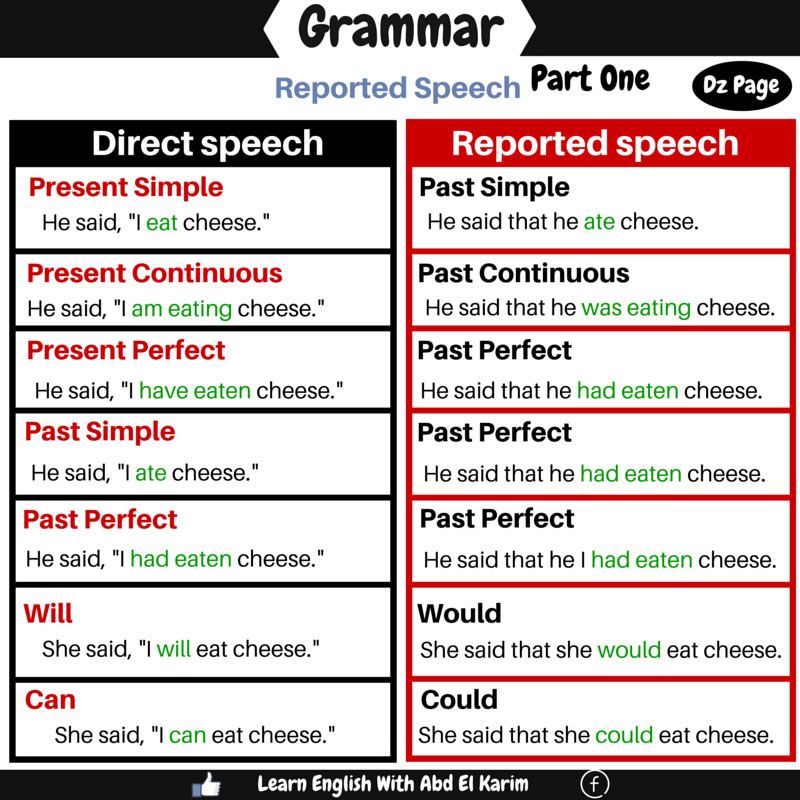 Take note of the circumstances that might cause your vehicle’s tires to need to be aligned more often. This is especially important if your car experiences sudden, powerful impacts, such as bumping into potholes or after an accident.
Take note of the circumstances that might cause your vehicle’s tires to need to be aligned more often. This is especially important if your car experiences sudden, powerful impacts, such as bumping into potholes or after an accident.
New cars usually run smoothly. However, after a while, there are some design or mechanical problems that can arise. You can accomplish a wheel alignment quickly and without causing much of a disruption to your daily life.
Driving a vehicle that is not in good alignment can have serious consequences. If your tires and suspension systems are not adequately maintained, it can lead to problems such as a blowout. It can make each trip you take dangerous!
A wobbling steering wheel that pulls the vehicle sideways while driving on level roads is another issue that could arise. This could indicate damaged suspension or faulty brakes.
You can also cause exhaustion if the wheels stop responding to you. To drive straight, you will need to keep your hands on the wheel. Even a slight drift in any direction is an indication that you most likely need some alignment work done for your vehicle to continue operating safely and smoothly.
Even a slight drift in any direction is an indication that you most likely need some alignment work done for your vehicle to continue operating safely and smoothly.
How Long Does a Wheel Alignment Take: Not Long at All!
Tire alignment can be one of the best ways for your tires to last as long as possible.
How Long Does a Wheel Alignment Take: Types of Alignments
When a mechanic adjusts only the front wheels, it is called a two-wheel alignment or a front-end alignment.
Rearranging the caster, toe, and camber may also be necessary.
This allows the front wheels to drive parallel to the vehicle’s centre.
While this is a simple modification, if your vehicle has a solid axle, you won’t need to do it.
A mechanic may also need to modify the thrust angle using a two-wheel alignment.
A mechanic can use this approach to determine if all four wheels are squared with each other.
A four-wheel alignment, on the other hand, is when a mechanic rearranges all four wheels. This change is only required if your car is an AWD type with independent suspensions. The front toe and caster, as well as the rear toe and camber, are routinely adjusted as part of this procedure.
Many factors can affect the time it takes to align tires. It may take longer to align with different vehicles, depending on the vehicle type. Older vehicles may take longer to align. If parts are in poor condition, technicians may need to bring WD-40 and a torch to heat them or break them down.
The expertise of the technician can speed up or slow down the process. They are difficult and time-consuming to do on your own. Let a certified technician do the work for you.
The procedure for servicing cars at tire change stations can take a different amount of time. The exact figure depends on the equipment present and the professionalism of the master. On average, changing the wheels of a car at a tire fitting stretches for 20-30 minutes, in the absence of a serious workload of personnel.
The exact figure depends on the equipment present and the professionalism of the master. On average, changing the wheels of a car at a tire fitting stretches for 20-30 minutes, in the absence of a serious workload of personnel.
Contents
In some cases, the installation procedure can take an hour or more. The exact figure will depend on the type of work performed.
If you put new skates on the wheels, you need to count on at least an hour.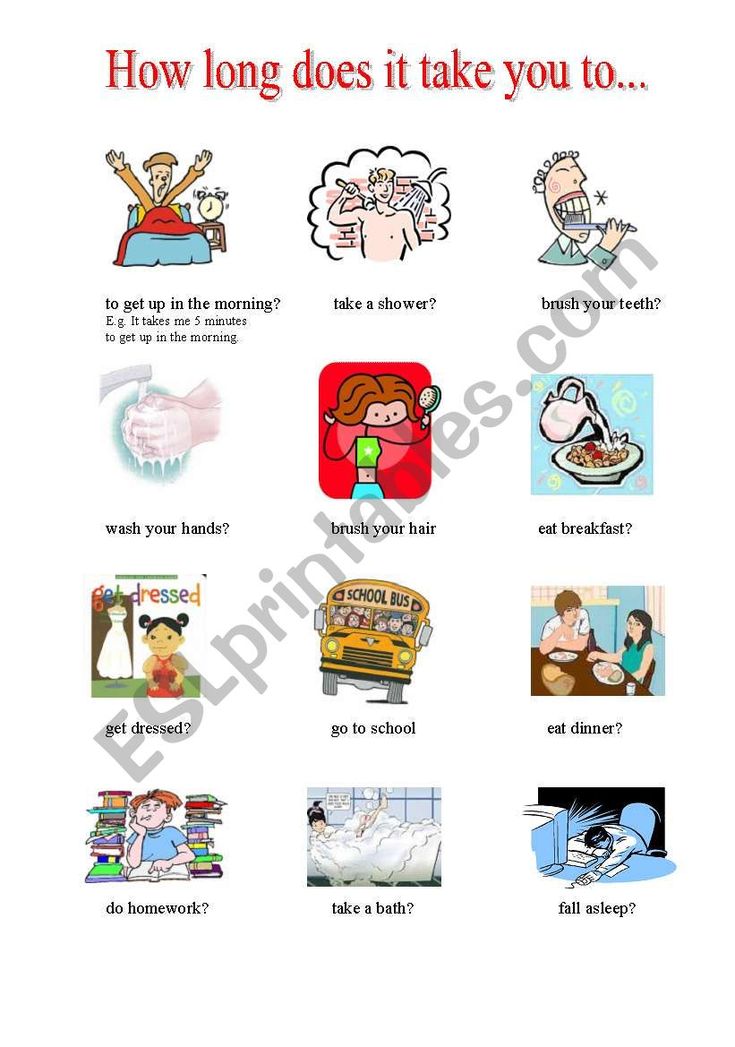 The usual replacement of finished wheels is faster. A savvy master can change all discs in a few minutes.
The usual replacement of finished wheels is faster. A savvy master can change all discs in a few minutes.
The need for repairs also affects the efficiency of work. In some situations (vulcanization is required), the procedure may take a day.
Service stations and tire shops in Russia always try to work as quickly as possible. The salary of the master directly depends on the number of clients. Usually the procedure for changing a set of tires from summer to winter does not take more than one hour.
Waiting time can be increased by factors that do not affect the immediate speed of the specialist's work - this is the queue and customer requirements.
Installation of summer tires is more difficult for the master than winter tires. This is argued by the increased rigidity of the rubber. Dense sidewalls are difficult to put on discs, which requires great physical effort.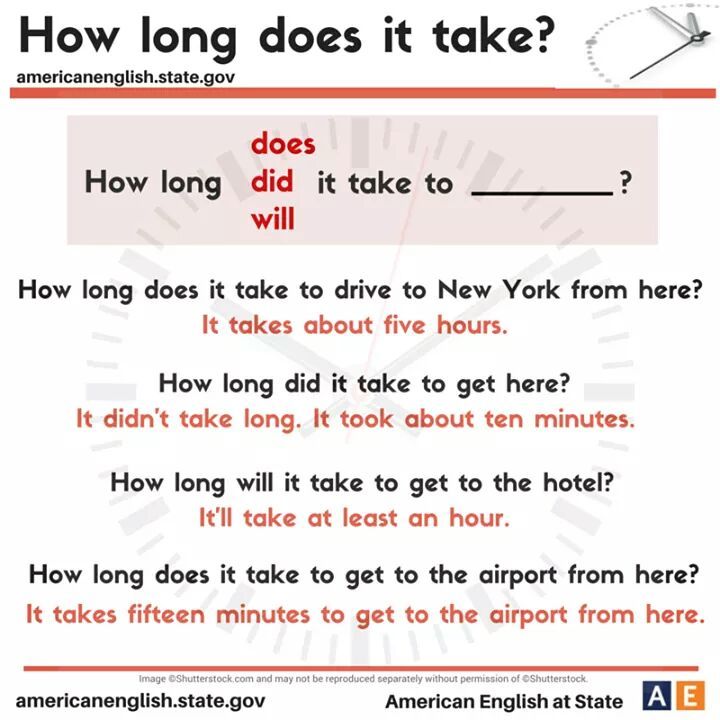
This difference will not be noticeable to the user. Experienced technicians know how to properly place a product on the machine for fast assembly.
To facilitate the process of changing tires and speed up service, you can foresee a few points in advance and not wait in a huge queue.
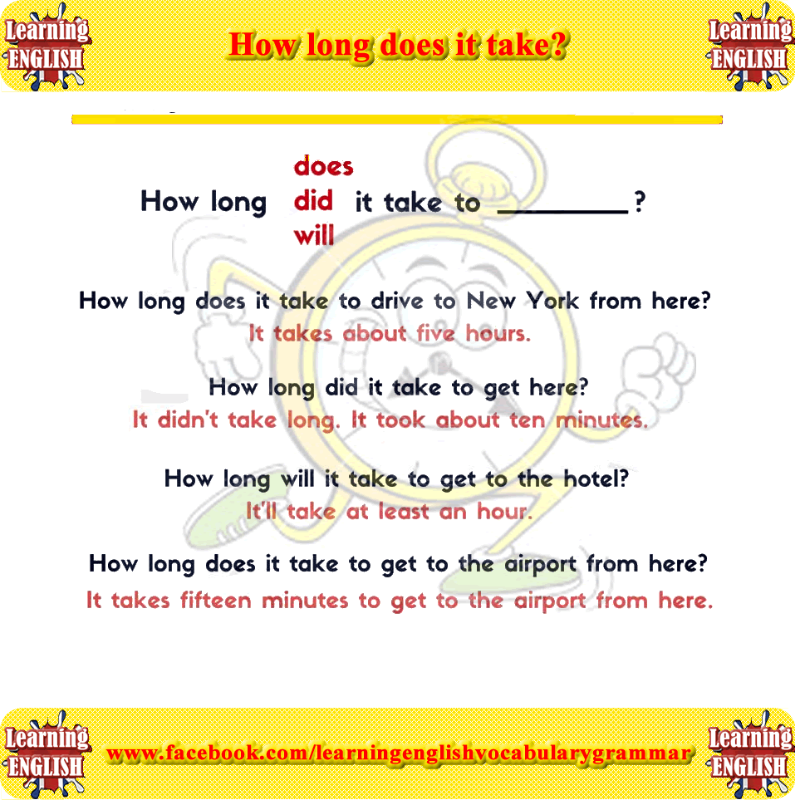
Leave a review
During the period of mass change of shoes at tire shops, do not overcrowd. But you can save both waiting time in line and money.
Tire inflation with nitrogen and 7 more fittings at the tire shop
The tire manufacturer's instructions say to change shoes when the temperature drops below +7°C. In my opinion, it's too early. There are still a lot of cars on the roads with summer tires around. And at this temperature, the braking distance on your studded tires may be even longer.
There are still a lot of cars on the roads with summer tires around. And at this temperature, the braking distance on your studded tires may be even longer.
I advise you to change the wheels to winter ones when the temperature drops below zero at night. That's when it really is time, because in the morning an icy area can be caught on the roads. At the same time, out of habit, it will seem very slippery.
Precisely then, to do it at the most correct and convenient time. The vagaries of the weather are unpredictable. Residents of the Rostov region, for example, say that sometimes during the winter period they rearrange the wheels from winter to summer and back several times.
Dismantling wheels (that is, dismantling a tire from a rim) at home is not an easy task that requires appropriate skills and knowledge. We will describe a simpler job that, in theory, any average motorist who does not have special tools and experience in tire fitting should be able to handle. Therefore, we assume that you have a complete set of serviceable winter tires mounted on rims. You remember that in the spring they did not lose pressure, there are no cuts on them, and a couple of self-tapping screws do not stick out of the tread in addition to the spikes. And, most importantly, the tread height is more than 4 mm. These are the modern requirements for winter tires. If at least one of the conditions is violated, then it is better to solve the problem before the onset of the hot tire season.
Therefore, we assume that you have a complete set of serviceable winter tires mounted on rims. You remember that in the spring they did not lose pressure, there are no cuts on them, and a couple of self-tapping screws do not stick out of the tread in addition to the spikes. And, most importantly, the tread height is more than 4 mm. These are the modern requirements for winter tires. If at least one of the conditions is violated, then it is better to solve the problem before the onset of the hot tire season.
If I change wheels, do I need to balance them every season?
There are car owners who meticulously balance tires before each season. In my opinion, this is not justified. I recommend installing the wheels on the car, then drive at different speeds, but not higher than your usual ones. If the imbalance (it is manifested by vibrations on the steering wheel or seat) is not felt, then the balancing can be postponed until future seasons. In principle, it is possible to balance winter tires before storage: after all, the spring period for changing wheels in tire shops is more extended in time compared to autumn, and therefore there are noticeably fewer queues.
In principle, it is possible to balance winter tires before storage: after all, the spring period for changing wheels in tire shops is more extended in time compared to autumn, and therefore there are noticeably fewer queues.
So we take the wheels out of storage. For one, this is the corner of the garage, for the other - a balcony, for the third - the warehouse of the nearest car service that provides wheel storage service. Tires may have different temperatures depending on storage conditions. Wheels removed from a warm room, having cooled down by 20 ° C, will lose about 0.2 bar of pressure, and gradually, as they cool down. Well, the cold ones have nothing to lose! Therefore, cold ones can be immediately pumped up to the nominal pressure, well, maybe 0.1–0.2 bar more, given that it will only get colder further. And warm tires must either be inflated with a large margin immediately, or set the pressure at the end of all work, when the air in them cools down.
If you use a regular jack, it is better to substitute a special stand under the car for insurance. Well, or at least put a spare wheel so that when it falls, the threshold lies on the rim, and not on the tire. Please note that this will most likely damage the disc. Therefore, it is better to use an old unnecessary wheel.
Which jack is best? - examination of the RF
We find a flat area with a hard surface. If you change the wheels yourself twice a year, then I strongly advise you to get a convenient jack. At least small and inexpensive, but rolling. It is significantly more reliable and durable than the regular one that your car was equipped with. It is advisable to use a balloon wrench with a cruciform or with an elongated handle - it is more convenient than the standard one supplied with the car.
Prepare a wheel stop - yes, at least half a brick.